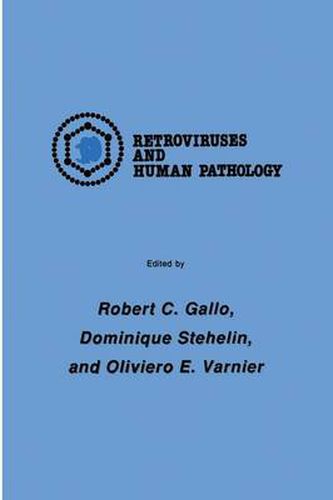Readings Newsletter
Become a Readings Member to make your shopping experience even easier.
Sign in or sign up for free!
You’re not far away from qualifying for FREE standard shipping within Australia
You’ve qualified for FREE standard shipping within Australia
The cart is loading…






This title is printed to order. This book may have been self-published. If so, we cannot guarantee the quality of the content. In the main most books will have gone through the editing process however some may not. We therefore suggest that you be aware of this before ordering this book. If in doubt check either the author or publisher’s details as we are unable to accept any returns unless they are faulty. Please contact us if you have any questions.
For decades retroviruses have been riding the crest of a wave of experimental research directed toward the identification of an infectious agent of human neoplastic diseases. In the early 1970s, several scientists successfully demonstrated the presence of retroviruses in numerous animal species and proved their etiological role in some related diseases. Corresponding findings in humans were somewhat discouraging. Although financial support for this line* of research declined, a few dedicated retrovirologists survived and continued to collect more biological information and technological expertise that opened a new approach to the search for a human retrovirus. The rewards came with the discovery that the genes responsible for neoplastic transformation (oncogenes) are of cellular origin and can be shuttled about by retroviruses, and with the identification of a new family of Human T-cell Lymphotrophic retroViruses (HTLV) from patients with diseases ranging from leukemia to the acquired immunodeficiency syndrome (AIDS). An understanding of the role and significance of retroviruses in human pathology requires basic knowledge of the major animal systems studied. With this perspective in mind, we present here a survey that includes general overviews, minireviews on each animal system studied with selected experimental reports and, finally, a stimulating review of the field of human retrovirology by many of the pioneer scientists who created it. We are especially grateful to Profs. C. A. Romanzi and G. C. Schito for promoting the organization of the Symposium. On behalf of the Sym posium Committee, we thank E. Soeri, L. Casarino, G. P. Gesu, M.
$9.00 standard shipping within Australia
FREE standard shipping within Australia for orders over $100.00
Express & International shipping calculated at checkout
This title is printed to order. This book may have been self-published. If so, we cannot guarantee the quality of the content. In the main most books will have gone through the editing process however some may not. We therefore suggest that you be aware of this before ordering this book. If in doubt check either the author or publisher’s details as we are unable to accept any returns unless they are faulty. Please contact us if you have any questions.
For decades retroviruses have been riding the crest of a wave of experimental research directed toward the identification of an infectious agent of human neoplastic diseases. In the early 1970s, several scientists successfully demonstrated the presence of retroviruses in numerous animal species and proved their etiological role in some related diseases. Corresponding findings in humans were somewhat discouraging. Although financial support for this line* of research declined, a few dedicated retrovirologists survived and continued to collect more biological information and technological expertise that opened a new approach to the search for a human retrovirus. The rewards came with the discovery that the genes responsible for neoplastic transformation (oncogenes) are of cellular origin and can be shuttled about by retroviruses, and with the identification of a new family of Human T-cell Lymphotrophic retroViruses (HTLV) from patients with diseases ranging from leukemia to the acquired immunodeficiency syndrome (AIDS). An understanding of the role and significance of retroviruses in human pathology requires basic knowledge of the major animal systems studied. With this perspective in mind, we present here a survey that includes general overviews, minireviews on each animal system studied with selected experimental reports and, finally, a stimulating review of the field of human retrovirology by many of the pioneer scientists who created it. We are especially grateful to Profs. C. A. Romanzi and G. C. Schito for promoting the organization of the Symposium. On behalf of the Sym posium Committee, we thank E. Soeri, L. Casarino, G. P. Gesu, M.